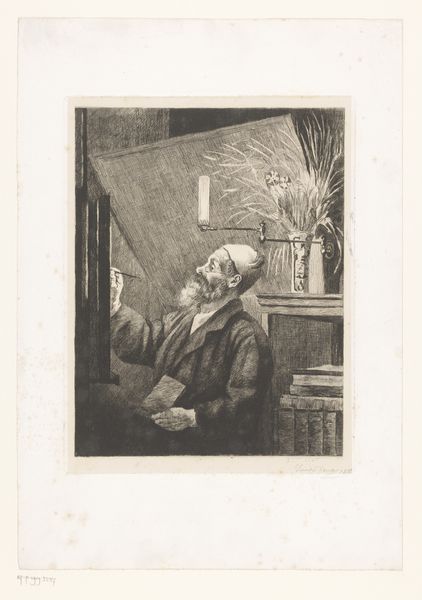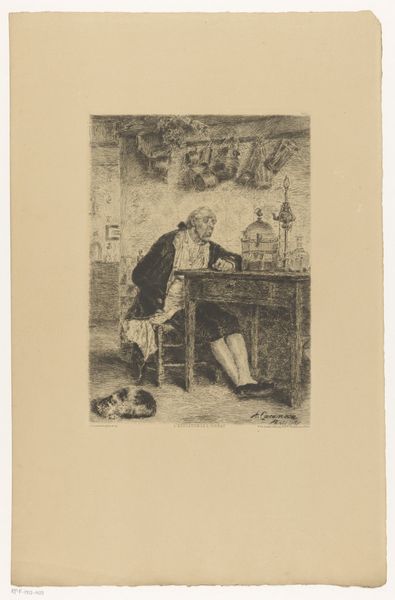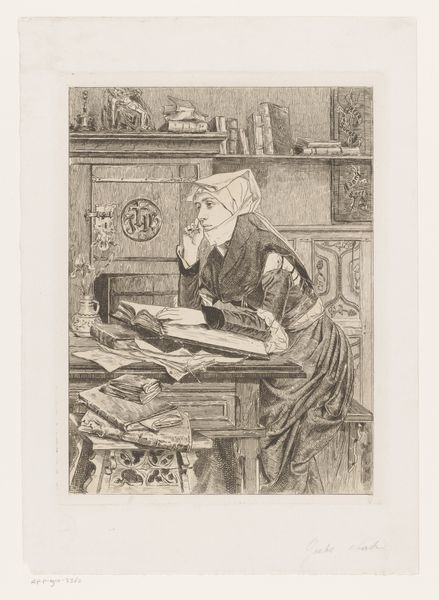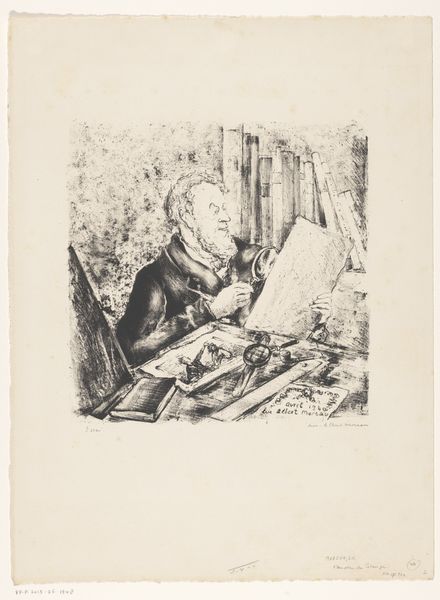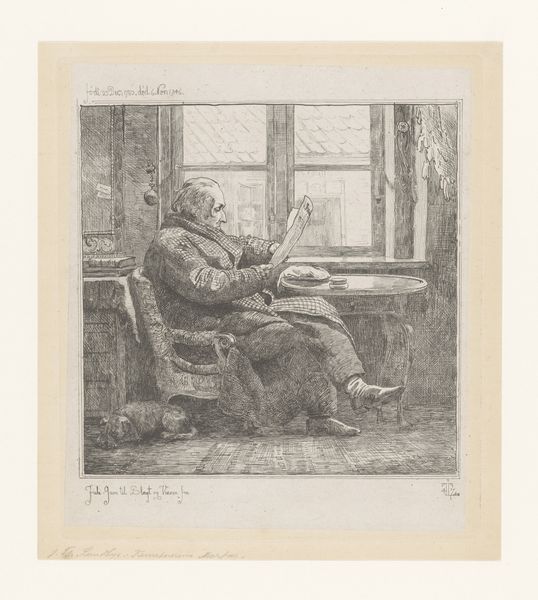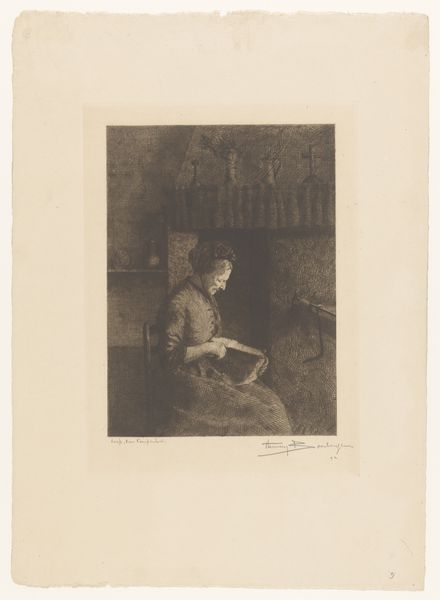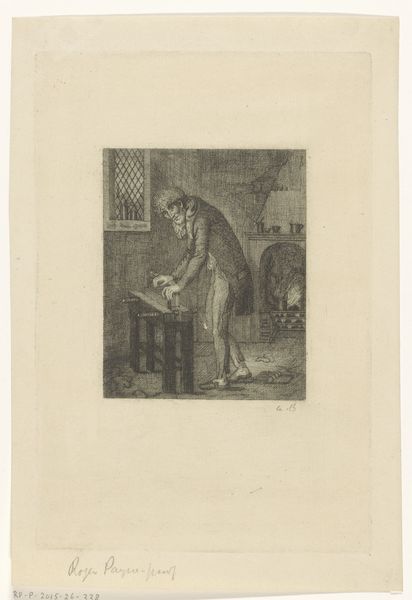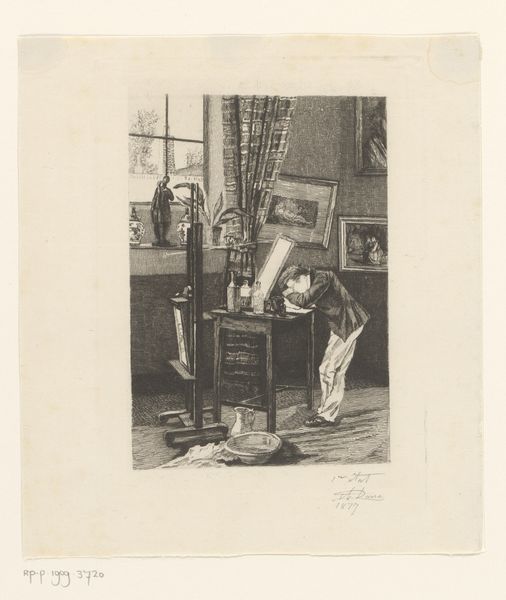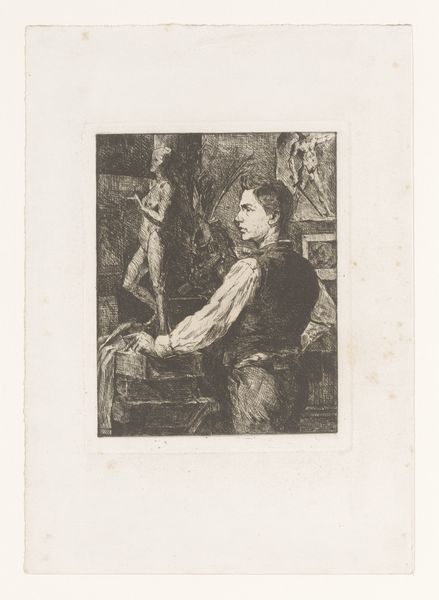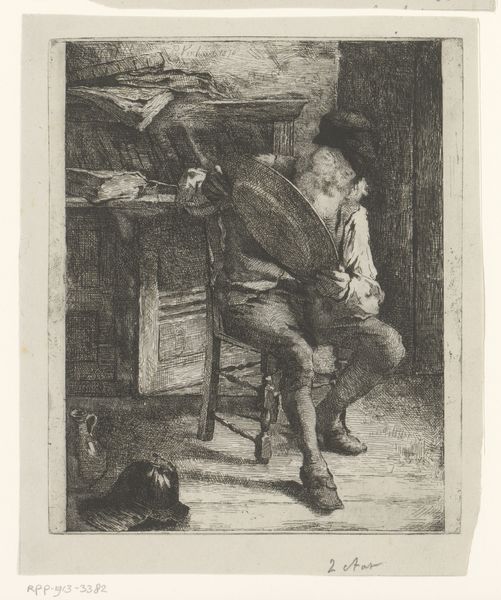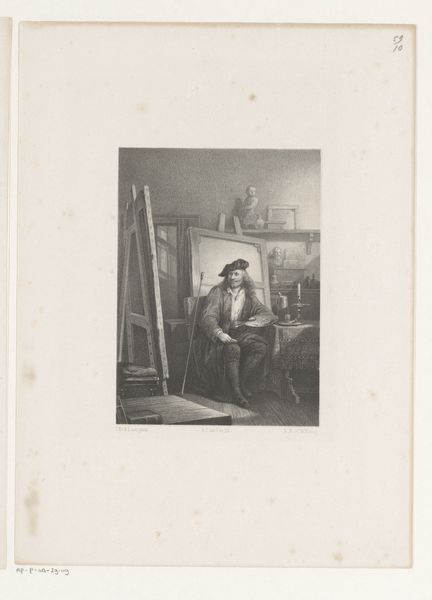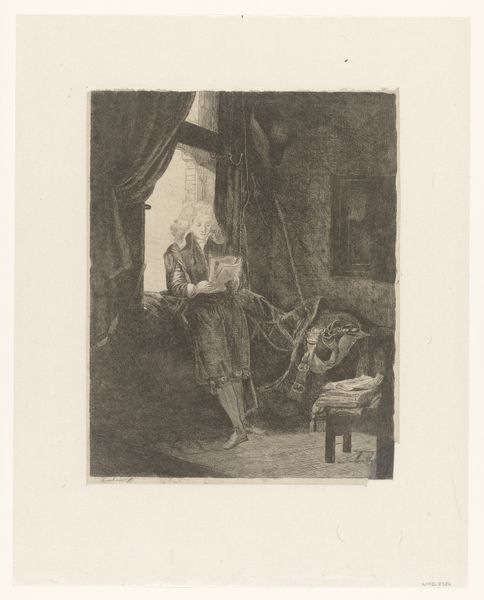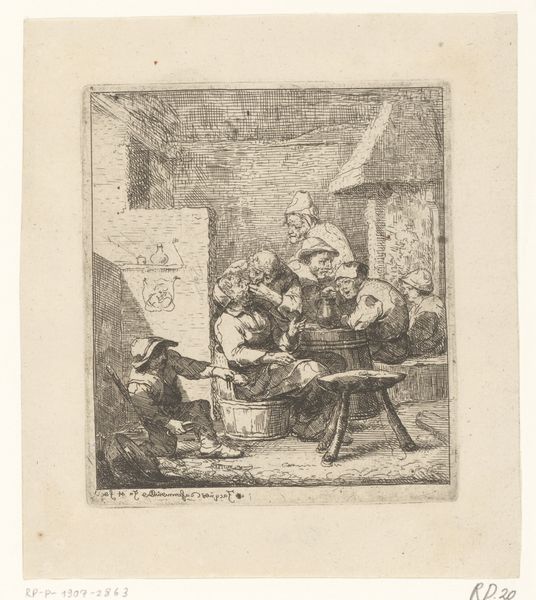
drawing, print, etching, paper, engraving
#
portrait
#
drawing
# print
#
impressionism
#
etching
#
old engraving style
#
landscape
#
paper
#
genre-painting
#
academic-art
#
engraving
#
realism
Dimensions: height 306 mm, width 237 mm
Copyright: Rijks Museum: Open Domain
Curator: This is "Auguste Danse aan de schildersezel," or "Auguste Danse at the Easel," an etching created in 1883 by Louise Danse. It is currently held in the Rijksmuseum collection. Editor: Immediately, I am struck by the intimacy of this print. It feels like a quiet, almost private moment captured, especially with the delicate line work. It has such an air of thoughtful contemplation. Curator: The image provides us with an intriguing look into the art world of the late 19th century and into the professional artistic life of the subject, as he paints, and that of the woman artist, Louise Danse, behind this composition. Notice the objects around the man; they feel very specific, creating a strong sense of place. Editor: Yes, and I see how this depiction humanizes the artist. By showcasing Auguste in his personal creative sphere, Danse bridges the gap between the often-perceived elevated status of the artist and the very real, human experience of making art. How does she position herself as the maker within the late 19th century art world? Curator: That’s key, isn’t it? The creation of a gendered discourse in the 19th century European academies served to exclude women from the narrative of Great Art; her presence at all within an etching of her subject must carry significance. We could even look at how the space she creates for him is implicitly cultivated and facilitated by the woman artist, enabling the Great Artist narrative to continue, at least ostensibly. Editor: Thinking of her perspective – she has created this small moment in print, this snapshot in history that encapsulates ideas of the domestic space, what the art making process looked like, and the positioning of both male and female artists. The act of producing this piece becomes a statement of claiming authorship in its own way. Curator: Absolutely. Beyond its aesthetic appeal, “Auguste Danse at the Easel” offers insights into the socio-cultural context of artistic practice and representation in the late 19th century. Thank you for helping illuminate these dynamics within the piece. Editor: Thanks for providing context to my intuitive feelings about this remarkable etching!
Comments
No comments
Be the first to comment and join the conversation on the ultimate creative platform.
